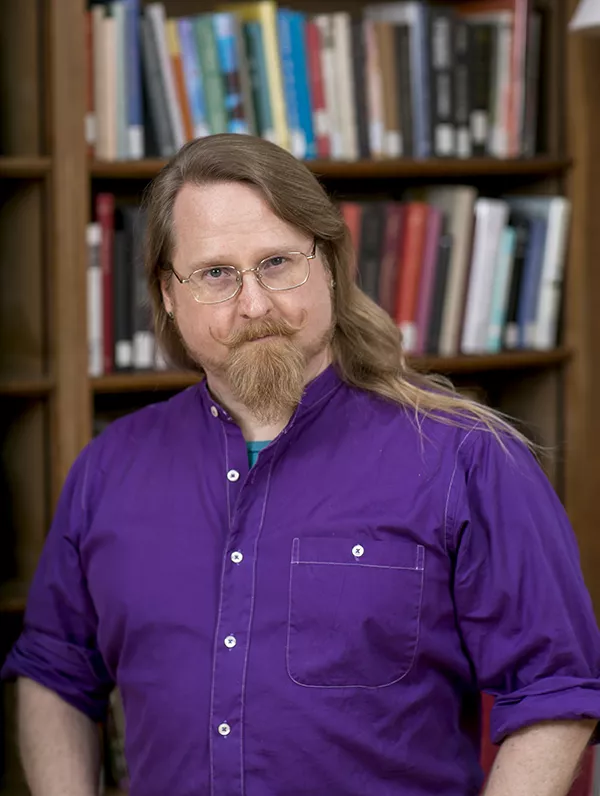
Bryn Mawr Professor Radcliffe Edmonds was among a small group of scholars invited to a Zoom workshop earlier this month to discuss a newly discovered ancient text, with Giulia Rossetto, a researcher with the Austrian Academy of Sciences, who made the unusual discovery.
Rossetto was studying manuscripts in the Monastery of St. Catharine in Sinai when she found that one of the texts from the 11th century CE had been written on recycled parchment from a much older Greek text.
The older text is only visible through modern imaging techniques, and Rossetto painstakingly deciphered it letter by letter. The result was a poetic text that recounts the childhood of the god Dionysus, one of the tales attested in the Orphic Rhapsodies. The number “23” is written at the top of the text. If it is indeed a piece of the Orphic Rhapsodies, then that might indicate that it is the 23rd book, out of 24 total.
Edmonds was invited to the workshop due to his extensive research on Orphic texts. Others taking part were experts in a diversity of relevant specialties, including Greek poetry and deciphering ancient writing. The scholars went over the fragments of text to figure out what might still be missing and debated what it might mean if they were really a part of the Rhapsodies.
While some scholars still regard Orphism as a cohesive doctrine, this outlook is not shared by Edmonds. As he argued in one of his recent books Redefining Ancient Orphism, the patchwork of materials considered to be “Orphic” are from a loosely related tradition of independent and sometimes overlapping poems rather than the kind of cohesive, bible-like religious doctrine that would be familiar to most people today.
Edmonds' theories may be bolstered by this latest finding.
“In this text, the Giants plot to tear Dionysus to pieces. We know from references in other texts that the punishment of the Giants was told in book 8 of the Orphic Rhapsodies. However, if the number '23' written at the top is meant to indicate that the manuscript is part of the 23rd book, that would mean the Orphic Rhapsodies were more likely a collection of related, overlapping stories than a linear doctrine,” he explains.
Edmonds,who is the Paul Shorey Professor of Greek and Chair of the Department of Greek, Latin, and Classical Studies, was the only U.S. scholar to take part in the workshop, where he joined colleagues from Italy, Spain, France, Greece, and Great Britain.
“This is a major discovery for the young scholar Giulia Rossetto, who came across the palimpsest [altered manuscript] while working on her dissertation on another topic,” says Edmonds. “And the keen interest of all these international experts attests to the significance of this new find for the understanding of Orphica, Greek hexameter poetry, and Greek mythology more broadly.”
About the Orphic Rhapsodies
From Monteverdi’s Orfeo to the hit musical Hadestown, the myth of Orpheus and Eurydice is alluded to in countless works of art and literature.
However, the myth is only one part of the mythos of Orpheus. Within the ancient world, Orpheus was also known as a legendary poet, Argonaut, and the founder of the Orphic mysteries.
Though there are references to Orphic rites throughout antiquity, the poems attributed to Orpheus are known mostly through references and quotations. Many of these quotations, especially in later writers, seem to come from a collection of 24 books referred to as the Rhapsodies of Orpheus, and both Christian and pagan authors treat this collection like an authoritative source of religious wisdom for the Greek tradition.